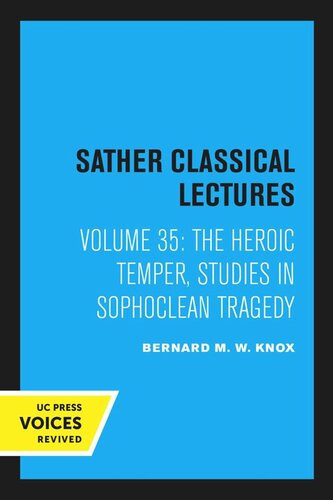

Most ebook files are in PDF format, so you can easily read them using various software such as Foxit Reader or directly on the Google Chrome browser.
Some ebook files are released by publishers in other formats such as .awz, .mobi, .epub, .fb2, etc. You may need to install specific software to read these formats on mobile/PC, such as Calibre.
Please read the tutorial at this link: https://ebookbell.com/faq
We offer FREE conversion to the popular formats you request; however, this may take some time. Therefore, right after payment, please email us, and we will try to provide the service as quickly as possible.
For some exceptional file formats or broken links (if any), please refrain from opening any disputes. Instead, email us first, and we will try to assist within a maximum of 6 hours.
EbookBell Team

4.8
24 reviewsThe first two chapters of this book isolate and describe the literary phenomenon of the Sophoclean tragic hero. In all but one of the extant Sophoclean dramas, a heroic figure who is compounded of the same literary elements faced a situation which is essentially the same. The demonstration of this recurrent pattern is made not through character-analysis, but through a close examination of the language employed by both the hero and those with whom he contends. The two chapters attempt to present what might, with a slight exaggeration, be called the "formula" of Sophoclean tragedy. A great artist may repeat a structural pattern but he never really repeats himself. In the remaining four chapters, a close analysis of three plays, the Antigone, Philoctetes, and Oedipus at Colonus, emphasizes the individuality and variety of the living figures Sophocles created on the same basic armature. This approach to Sophoclean drama is (as in the author's previous work on the subject) both historical and critical; the universal and therefore contemporary appeal of the plays is to be found not by slighting or dismissing their historical context, but by an attempt to understand it all in its complexity. "The play needs to be seen as what it was, to be understood as what it is."